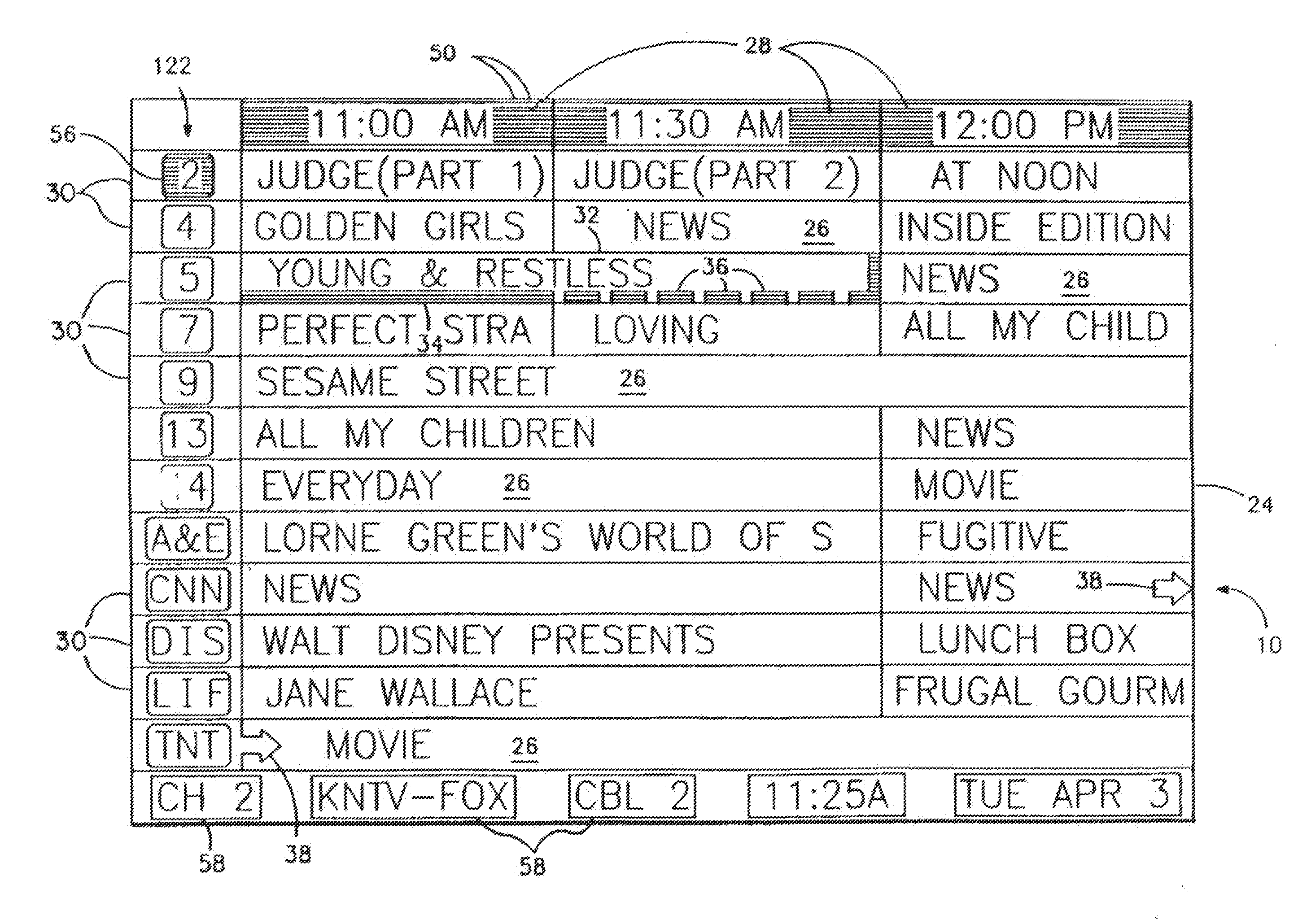Television schedule system
a schedule system and television technology, applied in the field of television schedule system, can solve the problems of difficult to set a vcr for automatic recording at a future date, record the wrong program or not to record anything, and make such a system and process easy and convenient to operate, and achieve the effect of simplified user control of a television and easy access
- Summary
- Abstract
- Description
- Claims
- Application Information
AI Technical Summary
Benefits of technology
Problems solved by technology
Method used
Image
Examples
Embodiment Construction
[0045]Turning now to the drawings, more particularly to FIGS. 1-7, there are shown a series of menu screens 10, 12, 14, 16, 18, 20 and 22 used in operation of the system and carrying out the process of the invention. Screens 10, 12, 14, 18 and 20 each consists of an array 24 of irregular cells 26, which vary in length, corresponding to different television program lengths of one half hour to one-and-one half hours or more. The array is arranged as three columns 28 of one-half hour in duration, and twelve rows 30 of program listings. Some of the program listings overlap two or more of the columns 28 because of their length. Because of the widely varying length of the cells 26, if a conventional cursor used to select a cell location were to simply step from one cell to another, the result would be abrupt changes in the screens 10, 12, 14, 18 and 20 as the cursor moved from a cell 26 of several hours length to an adjacent cell in the same row. Such abrupt changes disor...
PUM
 Login to View More
Login to View More Abstract
Description
Claims
Application Information
 Login to View More
Login to View More - R&D
- Intellectual Property
- Life Sciences
- Materials
- Tech Scout
- Unparalleled Data Quality
- Higher Quality Content
- 60% Fewer Hallucinations
Browse by: Latest US Patents, China's latest patents, Technical Efficacy Thesaurus, Application Domain, Technology Topic, Popular Technical Reports.
© 2025 PatSnap. All rights reserved.Legal|Privacy policy|Modern Slavery Act Transparency Statement|Sitemap|About US| Contact US: help@patsnap.com



